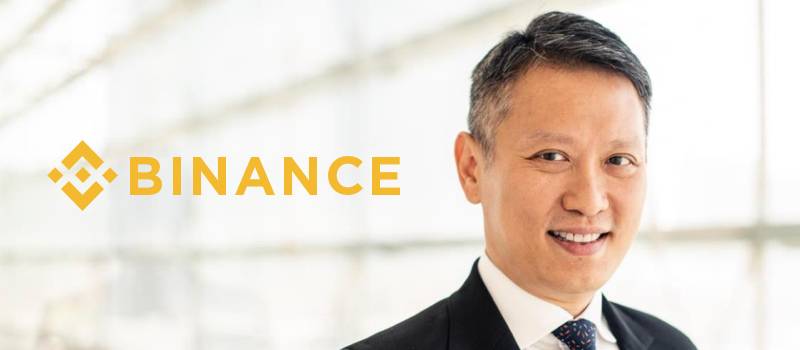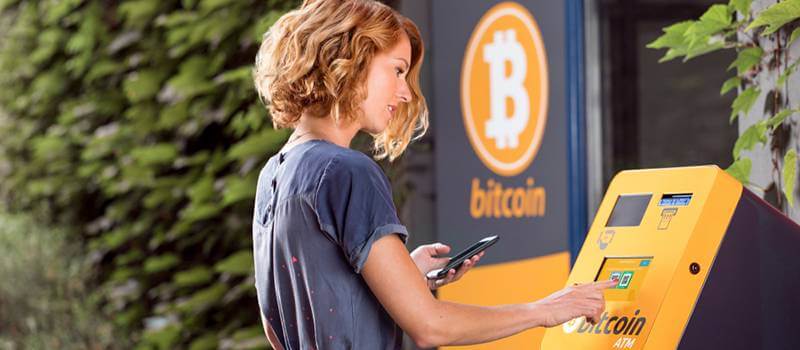Emerging markets like Nigeria, Kenya led 880% global crypto growth in 2021
A recently published report by on-chain research firm Chainalysis was prepared as an effort to measure grassroots cryptocurrency adoption amid the enormous growth seen in the crypto market over the year due to traction from industries. It has revealed a surge of over 880% in global adoption which was driven mostly by peer-to-peer platforms. The index gives an objective measure of countries with the highest crypto adoption by ranking their transaction volumes and examining their use cases and related transactions. It did not rely upon trading and speculation. In order to determine their overall ranking, about 154 countries were graded on the scale of 0 to 1 in the Global Crypto Adoption Index and it found that P2P trading increased crypto adoption in those nations. Data on global cryptocurrency adoption revealed growing interest from residents of countries as they were willing to enter the space. From the data, the total global adoption as of the close of Q2 2020 stood at 2.5. While the same quarter in 2021 was almost ten times more than this figure and stood at 24. This rate was up 881% in a year and 2300% between 2019 and now. The research suggests that various reasons could have necessitated this growth, such as preserving savings from currency devaluation, transferring and receiving remittances, and other business transactions. However, it also attributed the growth in North America, Western Europe, and Eastern Asia over the last year to Institutional investments.
Interestingly enough, peer-to-peer options have been credited for the surge in crypto adoption in emerging markets. Kenya, Nigeria, Vietnam, and Venezuela rank high in the index. Their transaction volumes on peer-to-peer (P2P) platforms are huge, caused by the inaccessibility of centralized exchanges. The emerging markets set this record despite issues such as currency devaluation and spending limits. However, in terms of web traffic to P2P platforms, Central and Southern Asia, Latin America, and Africa are leading. “Rich” countries like the U.S and China, expected to rank ahead, have both dipped further down on the list. China moved from its previous fourth position to thirteenth, while the U.S moved from sixth to eighth. The report indicated that this drop was due to their lighter P2P trade volume, weighted for the internet-using population. Kenya did more peer-to-peer crypto trades than anywhere else in the world, and Bitcoin and Ethereum peer-to-peer volumes in Nigeria continue surging, despite the crypto ban in Nigeria. Available data has revealed that in the month of June, citizens of the country traded around $38 million worth of digital assets —the second time the country has recorded volume above $35 million.

Binance (BNB) signs up ex-Singapore exchange chief to head regional unit
Binance, the largest crypto exchange in the world by trading volume, in its bid to combat its battle with regulatory authorities around the world, has appointed Richard Teng, the former chief regulatory officer of the Singapore Exchange (SGX), as the head of its Singapore’s branch. Interesting strategy – Binance hiring regulatory chiefs in order to become regulatory compliant! Teng, in his previous capacity as a regulatory enforcer, had overseen the formulation and administration of Singapore’s Securities and Futures Act. Apart from that, his experience in the field is vast – from the Monetary Authority of Singapore (MAS) to the Abu Dhabi Global Market. All of this points to his experience and authority within financial markets. Mr. Teng was recently speaking about his new appointment when he said, “We are witnessing rapid mainstream adoption of the blockchain and crypto technology, leading to the need for greater understanding and appreciation amongst individuals, institutions, and governments.”
He concluded by saying, “We seek to work closely with industry leaders and policymakers to enhance understanding of this fast-growing industry and support its sustainable growth.”
His viewpoints were corroborated by Changpeng Zhao, Binance CEO, who hailed Richard Teng for his previous accomplishments. Zhao stated, “We are delighted to have Richard leading the Binance Singapore team in securing more strategic partnerships, fostering innovation, and furthering the local cryptocurrency ecosystem in Singapore.” Meantime, Binance regulatory compliance efforts are going forward full steam ahead. After facing a torrent of regulatory clampdowns, Binance has mandated that all users on its platform make haste to complete their verifications so as to continue enjoying its services. The exchange had stated that this was important in order to become compliant with global regulators, whose Know Your Customer (KYC) and Anti-Money Laundering (AML) policies were at the center of Binance’s perceived shortcomings. According to the report: “All new users (have) to complete Intermediate Verification as it would give them access to Binance products and service offerings, such as cryptocurrency, deposits, trades, and withdrawals. Intermediate Verification includes the submissions of government-issued ID as well as facial Verification.” Zhao is of firm belief that hiring a former regulatory enforcer like Richard Teng will quickly help Binance to become “a leader in regulatory compliance.”

$100,000 Bitcoin and $5,000 Ethereum on track while Cardano leads the large caps
Crypto market leader Bitcoin put in an extremely strong performance last weekend, taking it above $50,000 for the first time since May 15, when the $50,000 price level was hit as BTC was on the way down. That was mostly thanks to Elon Musk’s environmental concerns at the time, which kicked off a very gloomy period. If we fast-forward back to the present, Bitcoin’s upward momentum brings along with it much new optimism, which is quickly spreading across the wider crypto market. Even though Ethereum had a somewhat stagnant prior weekend, the early hours of last Monday saw a 4% gain, bringing the crypto market’s second-place leader by market cap to peak at $3,350 early last week. Meanwhile, Cardano grew 17% during the same period, allowing it to hit a new all-time high of $2.90, and making ADA the best performing large-cap.
With the top three firings on all cylinders, most investors cannot help but wonder about end-of-year price predictions. Based on recent momentum, a $100,000 Bitcoin and $5,000 Ethereum seem plausible. Could Cardano accelerate forward from here, as well? It must be said that price predictions are notoriously difficult to get right, which is why many avoid giving them in the first place. Nonetheless, despite the lofty Bitcoin forecasts that are being tossed about, including $220,000 by EOY from Max Keiser, and a staggering $9.5 million at some future point from Dan Held, $100,000 is an often-cited figure for the near-term.
Yes, although it’s ambitious, requiring a doubling of where we are presently, at the same time, it’s still a price target within the realm of possibility. Especially considering Bitcoin has already doubled in value during these past four months. Investor Lyn Alden thinks Bitcoin can hit $100,000, but perhaps not by year-end. Instead, she believes we are already too early in the market cycle for that to happen before 2021 rings in the New Year. However, she remains optimistic about achieving that price target sometime in 2022. “I think we’re still in kind of the early-to-mid stage of its long-term trajectory. So that remains, I think, the best risk-reward as kind of a set-it-and-forget-it allocation.” In regard to Ethereum, she forecasts a $5,000 price target due to the recent London hard fork. What is a realistic end-of-year price prediction for Cardano? As something of a rank outsider, Cardano doesn’t have the same level of coverage as the other two. However, its recent performance has propelled it into the top three and has forced many skeptics to sit up and pay attention. Year-to-date gains for ADA are just short of +1,600%. For comparison, Bitcoin is up just 73% YTD, and Ethereum is up +350%. Traditionally, analysts have given conservative forecasts for Cardano due to its high 32 billion circulating supply of tokens. Coinpedia has given several EOY price predictions, with $3.294 the highest. At the current ADA price, that would require just a 16% appreciation in price, and Alonzo is still over three weeks away from rollout. Yet, the YouTube channel Coin Bureau predicts a $4 – $5 ADA price by EOY, assuming Bitcoin continues moving higher.

Western Union leaving Afghanistan is why the world needs Bitcoin
Speaking on CNBC, Bitcoin-bull Anthony Pompliano said, “get out and get away” regarding those investing in legacy money transfer firms. His comment came in response to Western Union’s declaration that it will suspend its services in Afghanistan, following Kabul’s takeover by the Taliban last week. Pompliano then raised the point that, through the Lightning Network (LN), people can use Bitcoin for money flow at zero cost. He stated that Bitcoin has the added benefit of being uncensorable, and in situations of uncertainty, as seen in Afghanistan at present, it can make the difference between life and death. During the interview, Pompliano was asked how quickly traditional money transfer firms, such as Western Union, might lose market share and/or become irrelevant due to Bitcoin and the LN. In his response, Pompliano didn’t have a timeframe for when that would happen, however he did emphasize using Bitcoin for this type of transaction, saying the LN allows the instant transfer of small amounts globally, and in some cases, at zero transaction cost. “When you look at something like Bitcoin, it allows, through the Lightning Network, anyone to send pennies, literally pennies, anywhere in the world completely for free with instantaneous settlement,” Pompliano stated.
The zero-transaction cost was in reference when using LN services via the Strike app. Per its FAQ section, LN transactions incur little to no fee. “Lightning network fees are minimal and at most will cost a few cents per transaction. We recommend using Lightning to carry out transactions where possible as there is little to no fee associated with a Lightning payment.”
Of particular interest is that Strike’s involvement with building Bitcoin infrastructure in El Salvador is doing much to raise the firm’s profile. Like many places, money flow from overseas migrant workers is something of a lifeline for many Afghans. Similar to El Salvador, Afghanistan’s economy relies heavily on friends and family abroad sending money back home. That is why the suspension of services by Western Union in the country is something of a blow for locals. The firm said it is monitoring the situation and will give an update in due time. As per their website: “Western Union understands the urgent need people have to receive funds, and we are committed to resuming operations for our customers in Afghanistan as conditions permit.” But Pompliano criticized their decision, saying Western Union’s withdrawal from Afghanistan came at the very time its people needed it the most. “At the time of need of literally millions of people, they pulled out of the country. They stopped supporting it….” He said, on the other hand, that Bitcoin, an uncensorable technology, doesn’t abandon people. Instances like this hammer home the benefits of cryptocurrency. He concluded that, especially among the younger generations, these trends will initiate the demise of legacy money transfer firms going into the future.

200 Bitcoin ATMs installed in El Salvador ahead of legal tender adoption
The Bitcoin Law making BTC official legal tender, which was revealed by President Nayib Bukele through parliament in June, will take effect on September 7 in El Salvador. In response, the government began installing crypto ATMs, now that the country has entered the last two weeks of preparation for the big day. The government is installing 200 Bitcoin ATMs and 50 financial branches across the country which will enable Salvadorians to convert the cryptocurrency into US dollars, and also withdraw from them in cash, Bukele commented on Twitter. All transactions will be commission-free and carried out through the official digital wallet dubbed Chivo, meaning “cool.” The President then reassured citizens that the choice of opting for US dollars won’t be taken away from them. “With this application, you can accept payments in Bitcoin or in Dollars, open a small business and run it from there, receive money from family or friends and send and receive remittances without paying a single penny of commission to anyone,” Bukele stated, and then he added that adopting Bitcoin could save Salvadorans $400 million per year in fees for receiving remittances from abroad.
In an effort to promote BTC adoption, those who opt for Bitcoin (BTC) and choose to download the Chivo application will receive $30 worth of Bitcoin for consumption. It seems like everyone in El Salvador will begin the realization of a new currency for the country on September 7th.
These changes initially raised much controversy, beginning with the World Bank’s refusal to assist El Salvador with integrating Bitcoin into its financial infrastructure. That was followed by the International Monetary Fund warning about economic implications and legal risks that may surface as a consequence of El Salvador’s bold legislation. There were even public opinion surveys and public protests. While some financial institutions continued raising doubts, others acknowledged the key benefits of the legal tender adoption. In the midst of it all, Bukele remained determined, saying nothing would hamper Bitcoin from seeing widespread adoption in El Salvador. He continuously focused on the economic relief and investment opportunities that his initiative will bring to the country.

Fund manager pegs Bitcoin at $100,000 in 2022. But warns of sell-offs
To the moon (and back? And back again?)! Florian Grummes, the managing director of the investment advisory firm Midas Touch Consulting, predicted a $100,000 price mark for Bitcoin in the next six months, with a possible dip. Speaking to Kitco News, he warned investors to treat the current surge with caution, noting that another correction may come to BTC soon before it would then advance to a new all-time high. Grummes described the last five weeks’ recovery as a nice, strong bounce, and he maintained that BTC will Reach $100,000 in 6 months; indeed, even mentioning that the $100,000 level is a conservative target. “What we’ve experienced over the last five weeks is a nice, strong bounce that is [typical] in crypto after a first sell-off. Another sell-off [could extend] to $25,000. That is still possible; otherwise, Bitcoin turns around at $35,000 and goes back to $60,000, and the bull market continues. I think $100,000 is probably happening within the next six months.” Grummes then described what the market should expect if Bitcoin reaches the level predicted. He said that by the time the flagship asset traded at $100,000, it would be a historical moment which would see more fund inflows from investors. However, it may experience massive selloffs at that time: in his belief, volatility will reduce despite potential wild swings, and the world-class asset may go as high as $1 million in a couple of years.
His prediction is coming at a time when Bitcoin is looking to maintain the $50,000 support level once again. Grummes sees the current price movement indicating either another crypto winter or that BTC is on its way to $100,000. For the past several weeks, Bitcoin has been changing hands at about the $47,400 price level. He noted that the oversold condition of Bitcoin is what had accounted for the recent rally, and he felt that, overall, the sector is becoming more mature. Bitcoin has now survived the China trauma, which had temporarily disrupted mining activity.
The post Digital Asset Insights #30 appeared first on JP Fund Services.



































